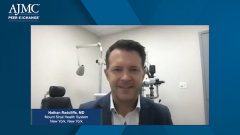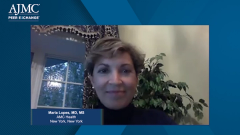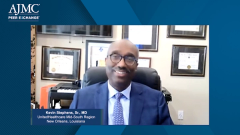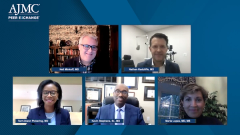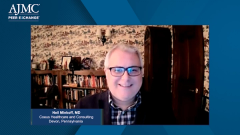
Key Takeaways on Optimizing Glaucoma Management
Closing out their discussion on glaucoma management, experts share practical advice for care providers and payers alike.
Episodes in this series

Transcript:
Neil Minkoff, MD: Do any of you have closing remarks, or if there’s something that we didn’t get to that could be brought up? Dr Stephens?
Kevin Stephens, Sr., MD:I want to reiterate that sometimes providers feel that the payer is on the opposite side of the fence, but they’re on the same side of the fence. We’re looking for better outcomes, we’re looking for standards in guidelines. We just need the data and the information so that we can help make the best decisions with you for the patient, particularly in a disease process like glaucoma where blindness and vision loss can be irreversible. I would say we all need to collaborate greater and better. Please use the peer-to-peer process because then you can talk to us and we can help to figure out what is the best thing for the patient, so we can have better outcomes: lower cost, better health care outcomes, better compliance, and those type of things.
Neil Minkoff, MD: Dr Radcliffe, anything to add?
Nathan Radcliffe, MD: Dr Stephens’ opening remarks on how glaucoma is a costly disease and it costs the family, the cost of the patient not working because they’ve lost vision—it’s always cost effective to treat glaucoma. I have engaged in the peer-to-peer process with insurance companies and always found it to be rewarding and reassuring. They’d always looked at the information in the chart. The problem is it is a complex disease, and you might have something that looks like it doesn’t make sense that I’m proposing, but then I explain 13 other things that were going on with the patient’s care, and then we always agree that there’s a good step forward.
It’s the disease and its complexity that make paying for it, caring for it, and having it, difficult. This is a disease to be respected. But I’m always thankful that we have partners who help us take care of folks because the patients and their fear, feeling alone and feeling like they’re going blind, that there’s nothing that can be done about it, it’s important to be there for them and for them to feel supported. I’ll thank you all for playing your role in it.
Maria Lopes, MD, MS:I always learn a lot from the experts, so I appreciated the dialogue. To me it looks like if I had something on the wish list, especially with all the treatment options that exist, it is how can we increase screening and prevention? Because that certainly shifts the thinking in terms of treating disease to preventing disease. And so hopefully we get better technology that offers ophthalmologists or even PCPs [primary care physicians] the ability to screen, generate greater awareness. We also have a capacity problem. With an aging population, we don’t have enough ophthalmologists or glaucoma specialists to take care of these patients. Many of them are in rural areas. We have social determinants of health, and so my plea is for greater awareness but also better technologies that allow for screening and early detection.
Terri-Diann Pickering, MD: Thank you. I’d like to thank Dr Stephens, and Dr Lopes, and Dr Radcliffe, and of course you too, Dr Minkoff. I appreciate being included in the program. I agree with Dr Lopes, if there is anything that we can do to nudge everyone, primary care doctors, endocrinologists, nurse practitioners, that once a patient hits age 45 or 50, get them in for an eye examination. It can be with an optometrist or ophthalmologist; it doesn’t have to be a glaucoma specialist. But just to get an eye exam to look for everything. Check for cataracts, tell them there’s the big 3, macular degeneration, glaucoma. If we could do that on a national level, that would be a huge benefit to society. We could catch the disease a lot earlier. If there’s anything that we can plug into the plan, a little nudge or reminder, “Hey, send your patient in for an eye exam,” obviously the diabetics definitely, but basically everyone once they hit about 40, 45.
Neil Minkoff, MD: I want to thank all 4 of you for such an engaging conversation. I felt that we had a very productive cross payer-provider dialogue where we were able to reach some common ground. I got a lot out of it as a former PCP to learn more about glaucoma and about some of the needs that we have. I want to thank all 4 of you very much, and I would like to thank everybody who is participating or who has been joining in our viewing audience, and hope that all of you who tuned in found this to be as robust and engaging as I did. Thank you very much.
Transcript edited for clarity.
Newsletter
Stay ahead of policy, cost, and value—subscribe to AJMC for expert insights at the intersection of clinical care and health economics.

